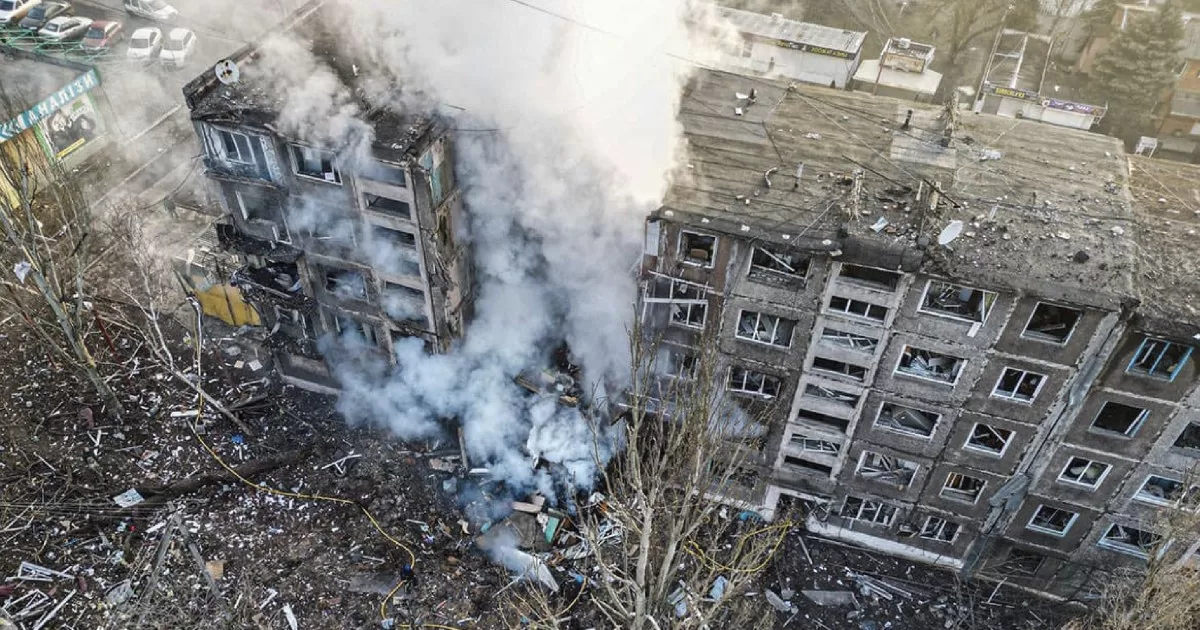He hoped a new, Moscow-friendly government would be installed in Kyiv and Russian forces would be occupying large swaths of eastern and southern Ukraine, including large cities, such as Kharkiv, Odesa and Dnipro.
Nothing of the sort happened, of course. The war – an interstate armed clash of a kind unseen in Europe since 1945 – is now entering its third year. Chances are it will drag on beyond this year, too.
At this point in time, Russia appears to be on a winning curve. It has a double advantage: in ammunition and in manpower. The Russian military-industrial complex is working at full capacity, churning out materiel. Russia is also receiving shells and equipment from friendly regimes, such as North Korea and Iran.
After announcing mass mobilisation in September 2022, the military authorities have been able to get enough boots on the ground, thanks to a range of economic incentives and some foreign recruitment.
Ukraine, meanwhile, is hobbled by the US Congress’s inability to pass the financial assistance package tabled by President Joe Biden back in October, which is critical for supplying Kyiv’s forces with weapons and equipment. EU members cannot fill the resulting gap in ammunition stocks because they have not managed to scale up military-industrial output. In addition, Ukraine faces a troop shortage, having kept the minimum recruitment age fixed at 27 years old.
The disparity is starting to show on the battlefield. The Ukrainian army’s much-expected summer and autumn counteroffensive ground to a halt, failing to punch through the Russian defensive lines in the Zaporizhia province and Donbas.
Recently, Ukrainians had to withdraw from the town of Avdiivka, close to Donetsk, handing a symbolic win to Putin. They are facing pressure in other parts of the front, too, including near Kreminna and Kupiansk, which Ukrainian forces recovered in a blitz offensive in the autumn of 2022.
Russia is suffering high losses, too. It is estimated 16,000 were killed and wounded and hundreds of military vehicles were lost in the battle for Avdiivka. But the military command and the Kremlin feel that they can prevail in a war of attrition because numbers favour their side, not Ukraine’s.
With Russia gaining momentum, voices arguing that Ukraine should sue for peace are beginning to emerge. The argument they make is that Kyiv should accept Putin’s terms now because it would be in an even weaker position going forward.
No doubt, the Kremlin is endorsing fully this line. The interview Putin recently gave to the former Fox anchor Tucker Carlson aims to reach out to the Republican base in the United States, which appears receptive. And of course, should Donald Trump win the presidential election in November, the notion that Ukraine should settle and make concessions to Putin could well become the cornerstone of US policy.
There are sympathetic leaders within the European Union, too, with Hungary’s Prime Minister Viktor Orban being one but not the only example.
However, chances for any meaningful negotiations are slim to non-existent. The Russian leadership seems to be hell-bent on fighting until the bitter end. There is no indication Putin and his entourage have changed their initial goals of subjugating Ukraine.
If Moscow believes that the tide is shifting in their advantage, what’s the point of stopping? The only virtue of a ceasefire and negotiations is to gain the time needed to reconstitute one’s forces and start pushing even harder.
This is precisely what the Ukrainians fear. Any effort to accommodate Putin would only spike his appetite for more land and greater control over Ukraine. A putative settlement might not be worth the paper it is written on.
Ukraine has cards to play, too. It has decimated Russia’s Black Sea fleet, for instance, sinking its flagship, Moskva, among others. The fleet has now relocated from Sevastopol in Crimea to Novorossiysk on the Black Sea’s eastern seaboard. As a result, commercial shipping out of the port of Odesa has reached volumes comparable to January 2022, the month before the full-scale invasion started.
What is more, Ukraine has demonstrated the capacity to strike targets deep within Russian territory – such as the oil export terminal in Ust-Luga, not far from St Petersburg. Ukrainians are working tirelessly on developing capabilities and military assets, such as long-distance drones, which could, over time, help deter Russians.
In short, Ukraine can blunt Russia’s edge, gaining time until Europe starts to deliver enough ammunition to fill the gap on the front line.
This all bodes ill for the prospects of negotiations. For both parties, war remains the only option on offer. Russia will doggedly pursue its campaign of conquest. Ukraine will defend itself valiantly. Short of an overwhelming victory for either Moscow or Kyiv in the coming months – a rather unlikely scenario – the war is here to stay.
The views expressed in this article are the author’s own and do not necessarily reflect Al Jazeera’s editorial stance.
